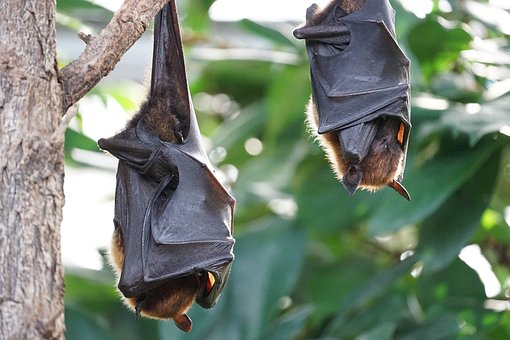Researchers at the University of Southern Denmark have found that bats use different structures in the larynx to produce low-frequency social calls and high-frequency echolocation calls. The structures used to create low-pitch calls are similar to those used by death metal vocalists or death growls.
Image Credits: Pixabay
Most mammals, including humans, have a low vocal range of between 3 to 4 octaves (sound wave frequency) compared to echolocating bats having a high vocal range of 7 octaves. Their echolocating and social calls range between 1 to 120 kilohertz, making them a unique mammal on earth.
How do different vocal structures help bats create vibrations?
Researchers extracted the larynx (voice box) from five adult Daubenton bats (Myotis daubentonii) to understand how different vocal structures help them produce various types of vibrations. They mounted and filmed them at 250,000 frames per second while applying a flow of air to mimic natural vocalization. Then, they used machine learning to reconstruct the motion of vocal membranes that were obscured by other structures.
They discovered that air pressure produced self-sustaining vibrations at frequencies between 10 and 70 kilohertz in the vocal membrane. This is sufficient for producing high-frequency echolocation calls. Contrastingly, thick folds of membrane above the vocal cords called “ventricular folds,” vibrate at frequencies between 1 to 3 kilohertz and are used to produce low-frequency social calls. Also, some humans use their ventricular folds to produce low-frequency vocalizations, such as death metal growls and Tuvan throat singing.
Image Credits: Pixabay
Why is this study significant?
According to the researchers, this is the first study to observe self-sustained vibrations in bat vocal structures that can generate social calls and echolocation. Natural selection to produce high-frequency calls for echolocating prey and much lower-frequency calls for social communication have created distinct evolutionary pressures that expanded the vocal range of bats.
“We show that bats vibrate extremely thin and light membranes extending from their vocal folds to make their high-frequency ultrasonic calls for echolocation. To extend their limited lower vocal range, bats make aggressive calls with their ventricular folds – as in death metal growls,” study authors added.
The study was published in the journal PLoS Biology.
To ‘science-up’ your social media feed, follow us on Facebook, Twitter or Instagram!




